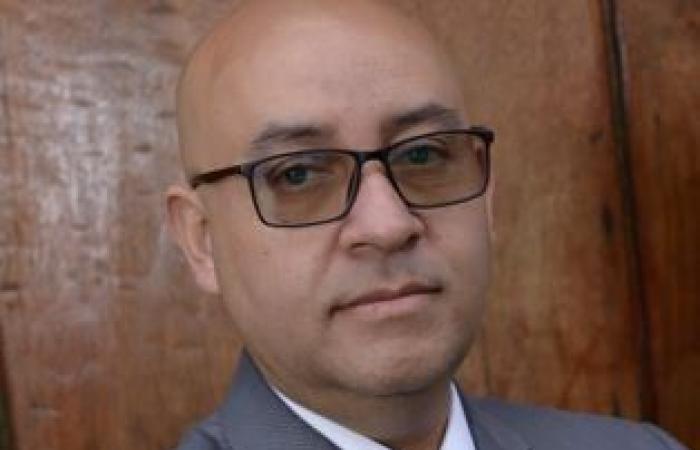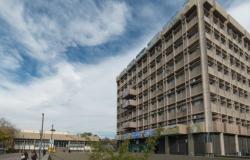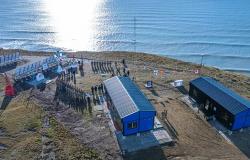He added that “what is making it a bit difficult in Colombia is that terrorist groups are using this criminal network to carry out their activities as an ‘outsourcing’ in matters of extortion, criminal income and the dominance of opponents who try not to allow themselves to be subjugated. of terrorist groups such as the FARC and ELN dissidents. “This expansion and this coordination between criminal organizations is bringing many problems to our country in terms of security.”
territorial domain
For the director of the Government Laboratory of the University of La Sabana, Omar Orostegui Restrepo, “there is a problem due to territorial control and illegal rents, especially in urban environments where the ‘Aragua Train’ has been gaining strength through the violence, intimidation and hitmen. This network has been very involved in the competition of illegal rents in the cities, it is closely associated in drop-by-drop issues and in general in all illegal rents: drug trafficking, extortion and hitmen. They are intervening in crimes of high economic profitability and are generating, let’s say, conflict and a criminal struggle between the same gangs to not lose control of those incomes. That is, between the local gangs and the Aragua Train networks.”
“The authorities must establish whether they are bands of the ‘Aragua Train’ or are networks that act on behalf of that organization outside the law. From research work it is known that criminals take the criminal franchise and take advantage of it to intimidate, but they do not necessarily have the direct support of the ‘Aragua Train’, but they use the name. But in the statistics, that gang that may be local and that uses the name of the ‘Tren de Aragua’, is counted as if they were criminal actions of the ‘Tren de Aragua’,” he stated.
He pointed out that “the ‘Aragua Train’ is a transnational crime gang and this situation makes it easier for it to carry out illegal activities, for example, with the theft of auto parts. As a transnational gang, it is much easier for them to move the objects they steal, cell phones, car parts, etc., because they move them with their transnational contacts and act like a mafia. This is its structure.”
“Here we must understand that this is a crime that transcends the physical borders of the country and coordination is needed to combat the criminal chain that is determined by the ‘Aragua Train’. As long as the criminal chain in which they participate is not contained, it is difficult to put an end to them. That is, they act like a mafia and that means identifying illegal income, money laundering, not only of the heads, but also how the structures are and how they communicate with each other and how they are moving the money. As they are transnational gangs, they necessarily have to move money between countries,” he asserted.
Power
The consultant and professor in Citizen Security, José Orlando Carillo, in turn, pointed out that “the ‘Aragua Train’ is a group outside the law from one of our neighboring countries and that has been forming in one way or another. and walking through South America where what we have seen are the settlements of this criminal gang made up of people who were, even, deprived of liberty in their nation and after they managed to escape, some of them take control of some territories where they handles micro-trafficking and obviously drug trafficking especially. Then they increase their power, generating other high-impact crimes such as extortion and even homicide. This group has been gaining power in different Latin American countries, obviously, due to its actions it has managed to acquire purchasing power from criminal income. “We must also take into account that there are many groups that do not belong to the ‘Aragua Train’ that have named themselves as them to achieve some criminal objectives and also gain economic resources.”
He explained that “the ‘Aragua Train’ participates in several high-impact crimes in Latin America and we see it especially in Colombia such as homicide, contract killings, extortion, micro-trafficking and drug trafficking and even weapons trafficking.” territorial level. It has also been discovered that behind the drop by drop there is part of the economic income of these criminal gangs in our country, since obviously this allows their purchasing power to increase day by day and for obvious reasons the strong expansion that it has within the territory ”.
Accurate blows
General José Daniel Gual Drón, commander of the Bogotá Metropolitan Police, for his part, said that “within this articulation between the authorities, especially the Prosecutor’s Office, our investigation bodies, our intelligence directorate, the Gaula Elite, the Gaula Bogotá, we strike accurate against the criminal structure of the Aragua Train. A criminal network that has been affecting citizens, especially in Bogotá.”
Drón, commander of the Bogotá Metropolitan Police, for his part, said that “within this articulation between the authorities, especially the Prosecutor’s Office, our investigation bodies, our intelligence directorate, the Gaula Elite, the Gaula Bogotá, we strike accurate against the criminal structure of the Aragua Train. A criminal network that has been affecting citizens, especially in Bogotá.”
He added that “let us remember that the structure of the Aragua Train is at its maximum head, alias ‘Niño Guerrero’ and another criminal from this criminal gang is coming that generates all the criminal action in Colombia and in Bogotá, especially. The importance of this accurate blow with the capture of the zone leaders and coordinators in Bogotá. But we also affect the criminal side related to the hitman factor, the money collectors, the profilers and those who distribute and deliver narcotics.”
He stated that “there are seven months of investigation, video analysis, follow-ups and the work of undercover agents and also very successful work with prosecutors to generate these 12 search warrants where we generated 20 arrests. Two grenades, a firearm, money of different amounts and also narcotics were seized.”
Regarding those captured, he indicated that “among the ringleaders, we talk about the zone leaders and we highlight the captures of alias ‘Ratón’, alias ‘Caracas’ and alias ‘Viejo Daniel’. The zones are divided into the Kennedy and Bosa sectors; another area Ciudad Bolívar and the area of Santa Fe and Mártires. And the coordinators who are alias ‘Jefferson’ and alias ‘Minipepsi’ come. Nothing moves and nothing is done in these zones if they do not have the autonomy, the authorization of the coordinators and the zone heads, but also of the leader who is in Bogotá and we are also following in his steps and we are going to reach him. for his capture.”
“Within these results we have we also highlight the complaint of at least 200 commercial establishments and people. They extorted bars, taverns, nightclubs, hotels, newspapers, recyclers and warehouses. They also had control of the microtrafficking pots and a person other than the one they authorized could not enter there, in those areas where they have control. It is a total control that they had. The hitmen are generated, the collection of extortion under the control and authorization of the zone heads and coordinators,” he stated.
He asked to report because “80% of the extortions in Bogotá have not been paid, because we have accompanied the victims and have been advising them. There is 20% related to prison extortions. With these captures we deal a certain blow to extortion and we will continue working, so that as soon as a ringleader becomes visible and whoever is under his control captures them in order to regain confidence and tranquility in Bogotá and especially of the merchants.
In other countries
The ‘Aragua Train’ is the most powerful criminal structure in Venezuela and the only local group that has managed to gain a foothold abroad. It stopped being a prison gang confined to the Aragua state to become a transnational threat with a broad criminal portfolio.
According to a report by Insight Crime, the operations center of the ‘Aragua Train’ was in the Tocorón prison, in the state of Aragua. The gang is also present in at least five other Venezuelan states: Carabobo, Sucre, Bolívar, Guárico and Lara.
It is still unclear where the group’s new core will be following the Tocorón invasion in September 2023. However, there is no indication that the gang has stopped operating in Venezuela.
Outside Venezuela, ‘Tren de Aragua’ has established permanent cells in Colombia, Peru and Chile, with reports of its activities in Brazil, Ecuador and Bolivia.
“These activities tend to concentrate in border areas with clandestine crossings commonly used by Venezuelan migrants, such as the border between Venezuela and Colombia, the border between Peru and Chile and the border between Bolivia and Chile. The gang has also established cells in urban areas with large populations of Venezuelan migrants, such as Bogotá (Colombia), Lima (Peru) and Santiago (Chile).”
The ‘Aragua Train’ maintains numerous links with organized crime and prison groups, both in Venezuela and in other countries, with which it has established non-aggression pacts. and even alliances to share criminal profits. One of these prison gangs was located in the Trujillo Judicial Detention Center, dominated by Álvaro Enrique Montilla Briceño, alias ‘El Loro’. The prison was taken over by security forces just over a month after officials raided Tocorón.








